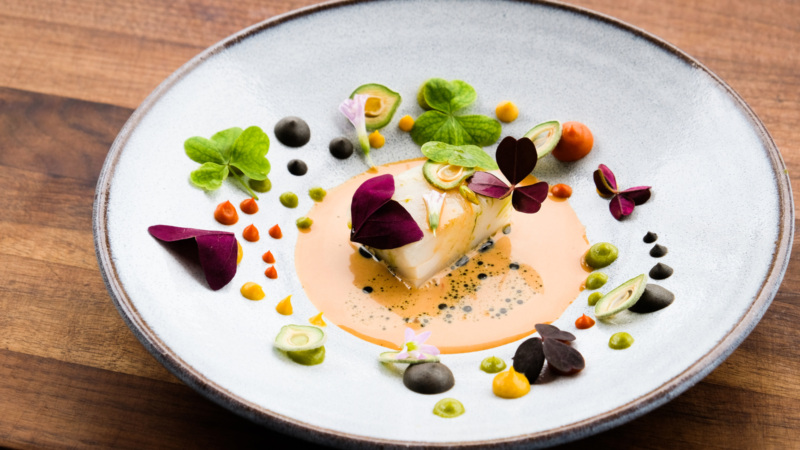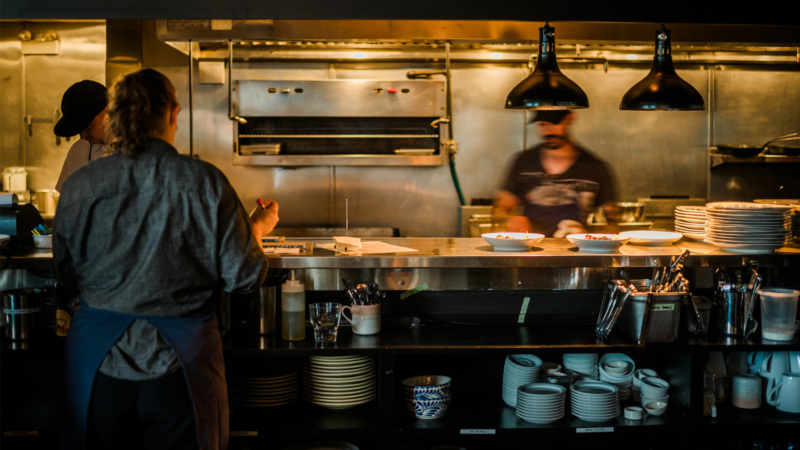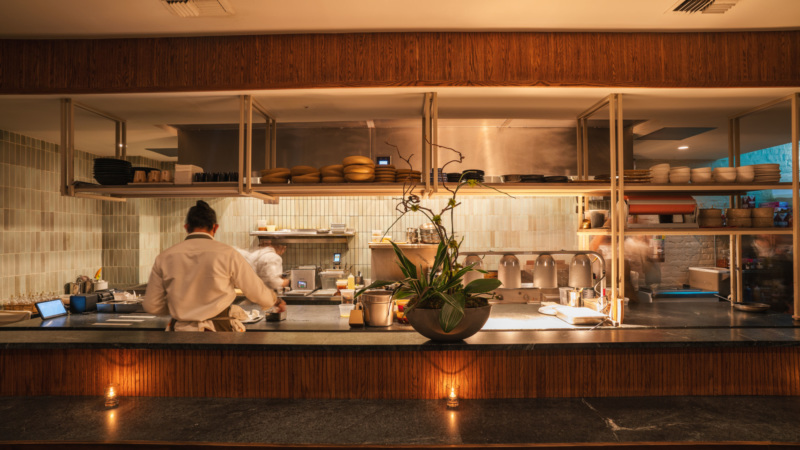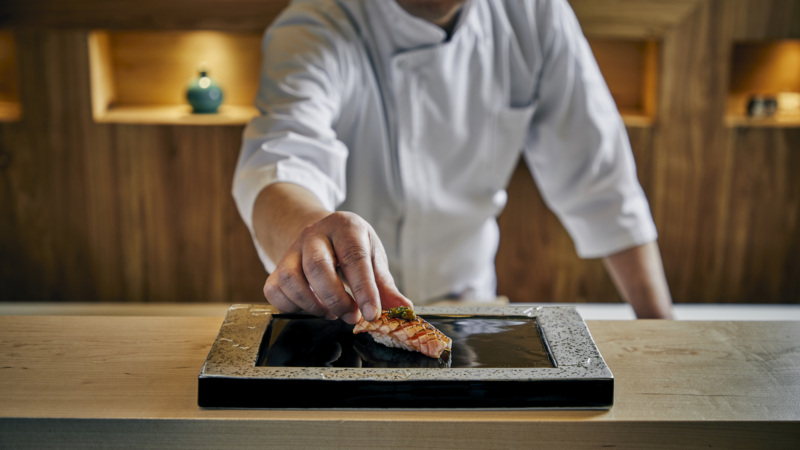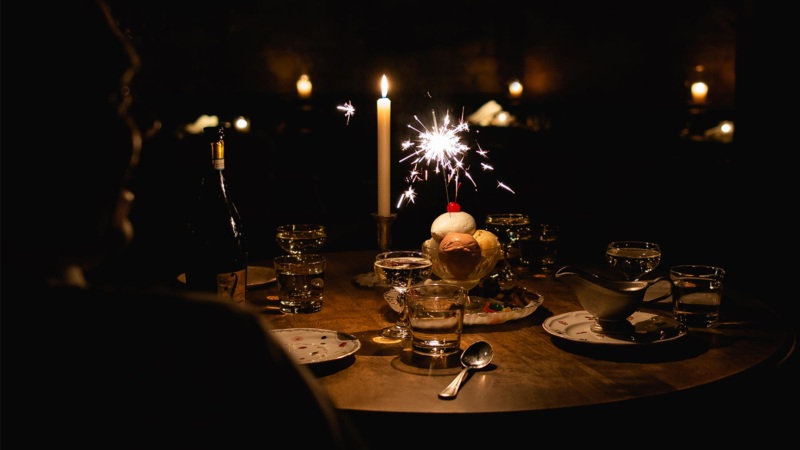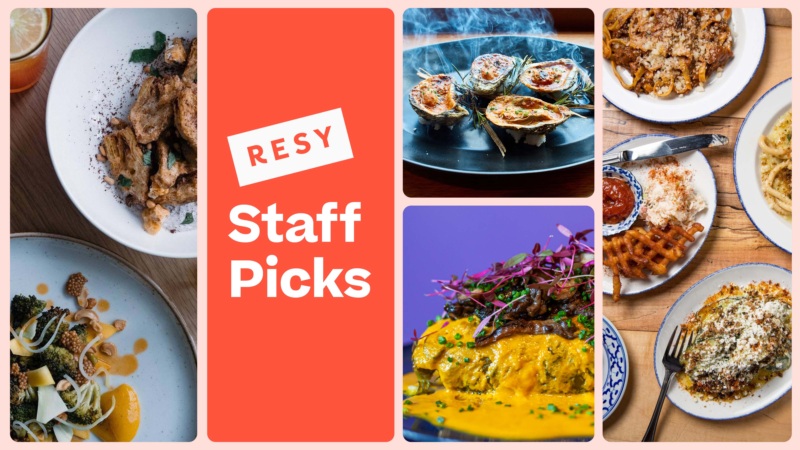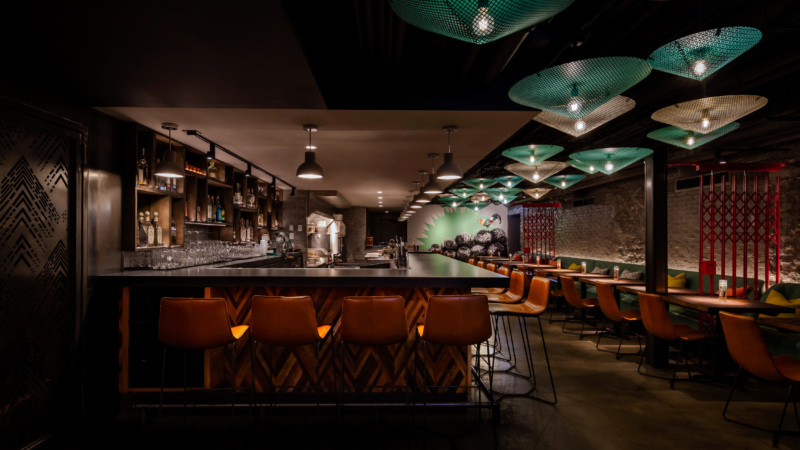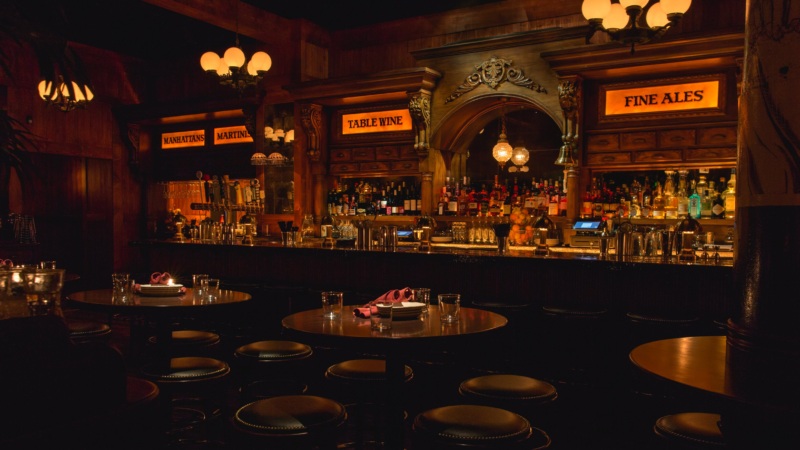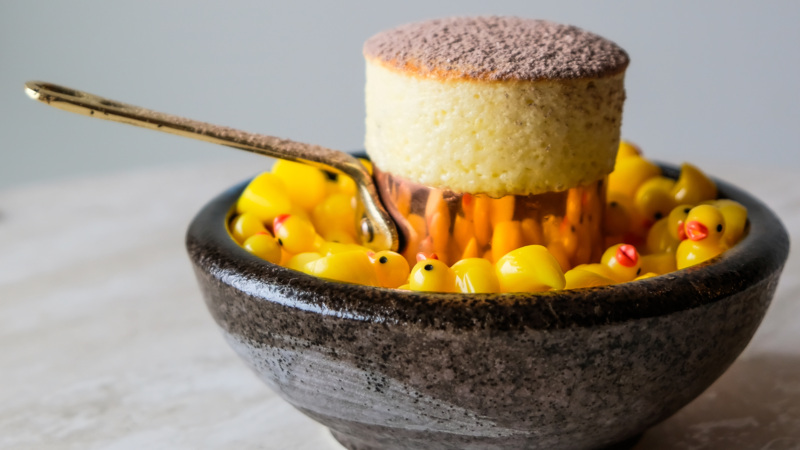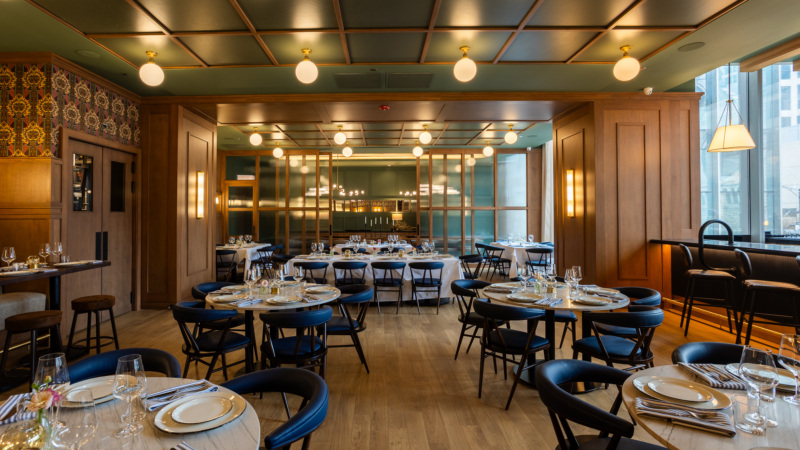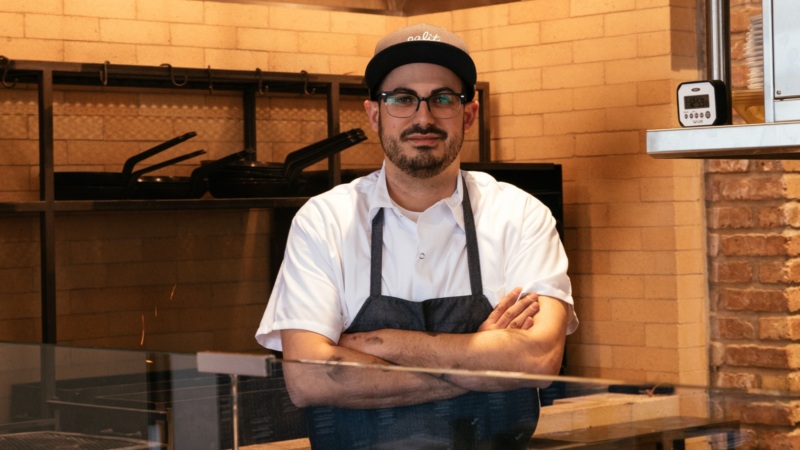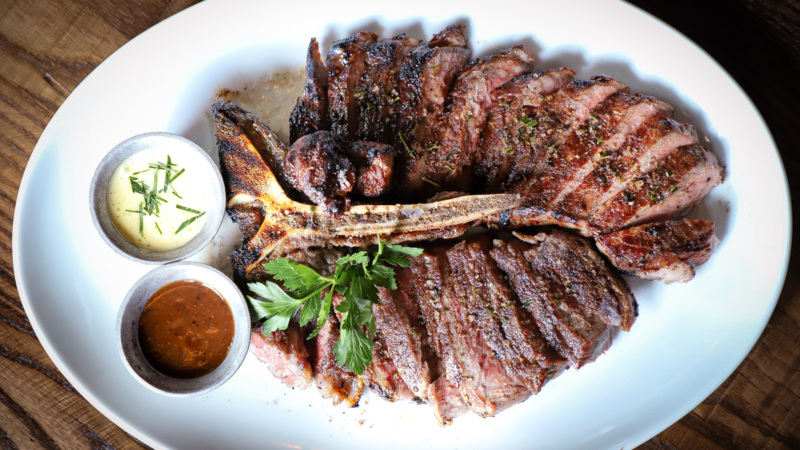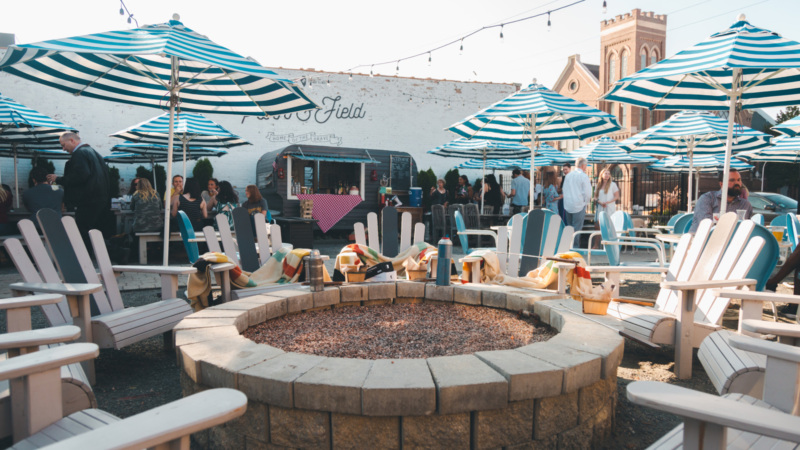
New Cindy’s Chef Kaleena Bliss Has Big Plans for Chicago’s Hottest Rooftop
Chef Kaleena Bliss has spent most of her career in the Pacific Northwest, cooking in Portland, Bainbridge Island, and Seattle, where she led the kitchen at the Thompson Seattle hotel. There, the Washington state native made a name for herself with her creative approach to local ingredients, affinity for foraging, and knack for connecting diners to the great outdoors.
After leaving Thompson last year, Bliss launched Forage & Feast, a series of foraging and dining pop-ups. This spring, she made an even bigger move: from Seattle to Chicago (and to another Hyatt hotel with a trendy rooftop restaurant), taking the reins at the Chicago Athletic Association, where she oversees the perpetual hot spot Cindy’s Rooftop.
We caught up with the chef to hear about how she’s enjoying her new city, what to expect on the new summer menu at Cindy’s, and how she’s learning to lead with compassion.


Resy: You’ve worked in Seattle for most of your career. What is your impression of Chicago’s dining scene and culture so far?
Kaleena Bliss: It’s so different! I feel weird not being by a coast. For me, just throwing myself in the Midwestern scene has been really exciting. It’s such a boom time here. Any kind of cuisine I can imagine, I can find in Chicago. It wasn’t always that way in Seattle. I’m kind of a loner right now, but I’m hoping to make some new friends. One of the people that I text with a lot is Zoe [Schor] of Split Rail. We actually met on the finale of Chopped but we’ve remained friends and have kept in touch. I live really close to her restaurant in the Ukrainian Village, so I go there quite a bit. I’m loving the fact that patio season is a thing here.
What are you most excited about coming to Chicago?
Exploring is fun for me. I’ve been in Seattle for a really long time, so I always knew where to get my produce from, or dry goods. Here, it’s like restaurant culture shock because I have to relearn all of that. Right now, my sous chefs and chef de cuisine are doing a lot of the ordering, but it’s been great getting to know other purveyors and some of the farmers. I’m not going to lie, it’s been a little overwhelming, but in the best way possible.
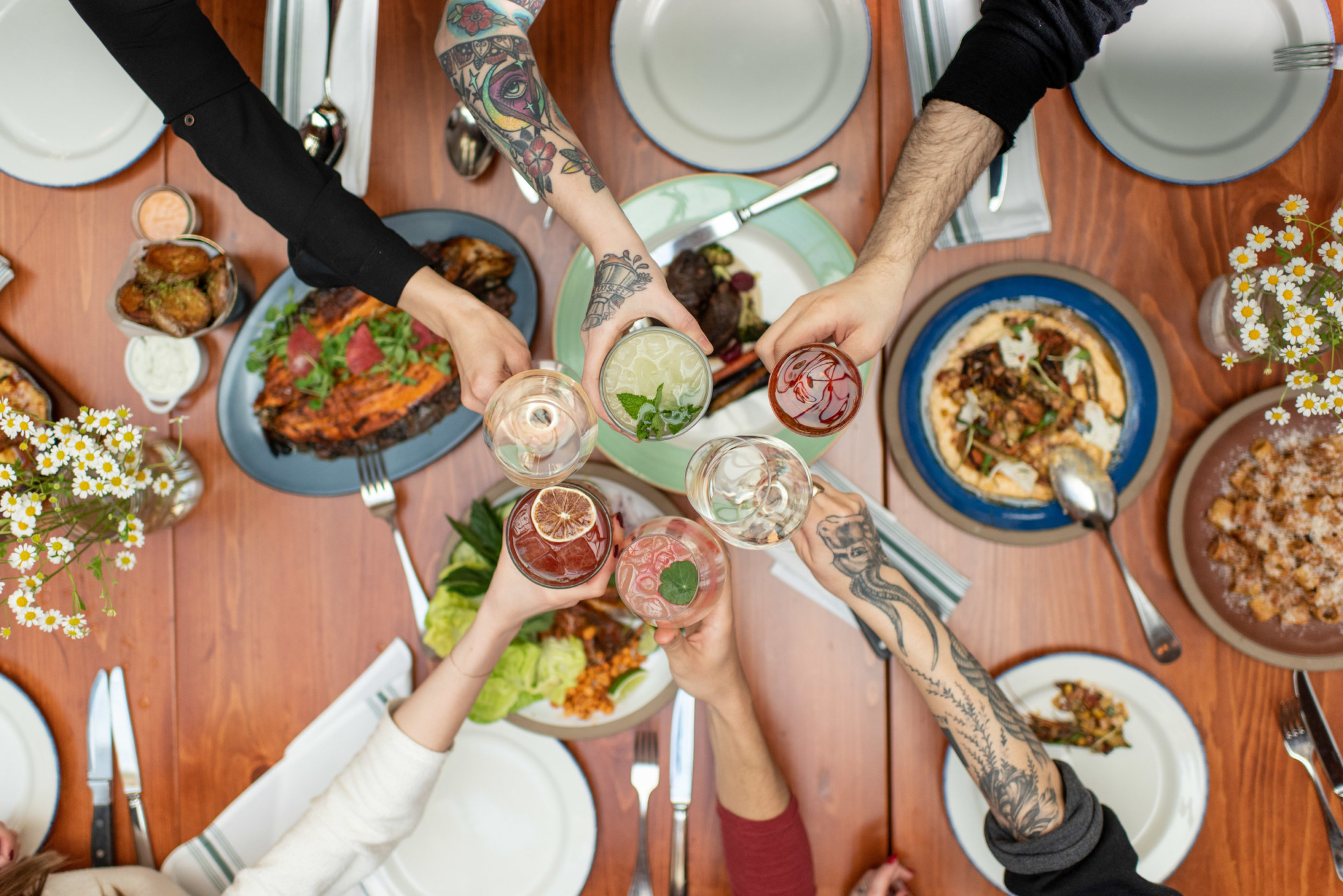
The One Who Keeps the Book Chicago
How to Get Into Cindy’s, Chicago’s Most Epic Rooftop
Opened in 2015 on the roof of the Chicago Athletic Club Hotel and boasting epic views of Millennium Park, Lake…
Can you tell us about any of the new dishes you have planned for the summer menu at Cindy’s?
Potato gnocchi was one of the first things I learned to make as a young chef and has been one of my favorites ever since. I carry it from kitchen to kitchen and just play around with the set. This one was fun and sentimental because I wanted to bring some of my background to the Midwest to show people who I am. We do a stinging nettle pesto, which grows rampant all over the Pacific Northwest, and incorporate ramps as a nod to the Midwest. A couple of my poor cooks actually got stung, because they had never worked with stinging nettles before.
Another dinner menu appetizer we just launched is a chilled king crab and lobster salad with soy ginger aioli, mint, scallion, celery, citrus, pickled fresno, and cucumber. It’s more approachable than a seafood platter, and more of a composed dish with our own flair. This one is a mix of East meets West – the lobster is from Maine and the king crab is from Alaska.
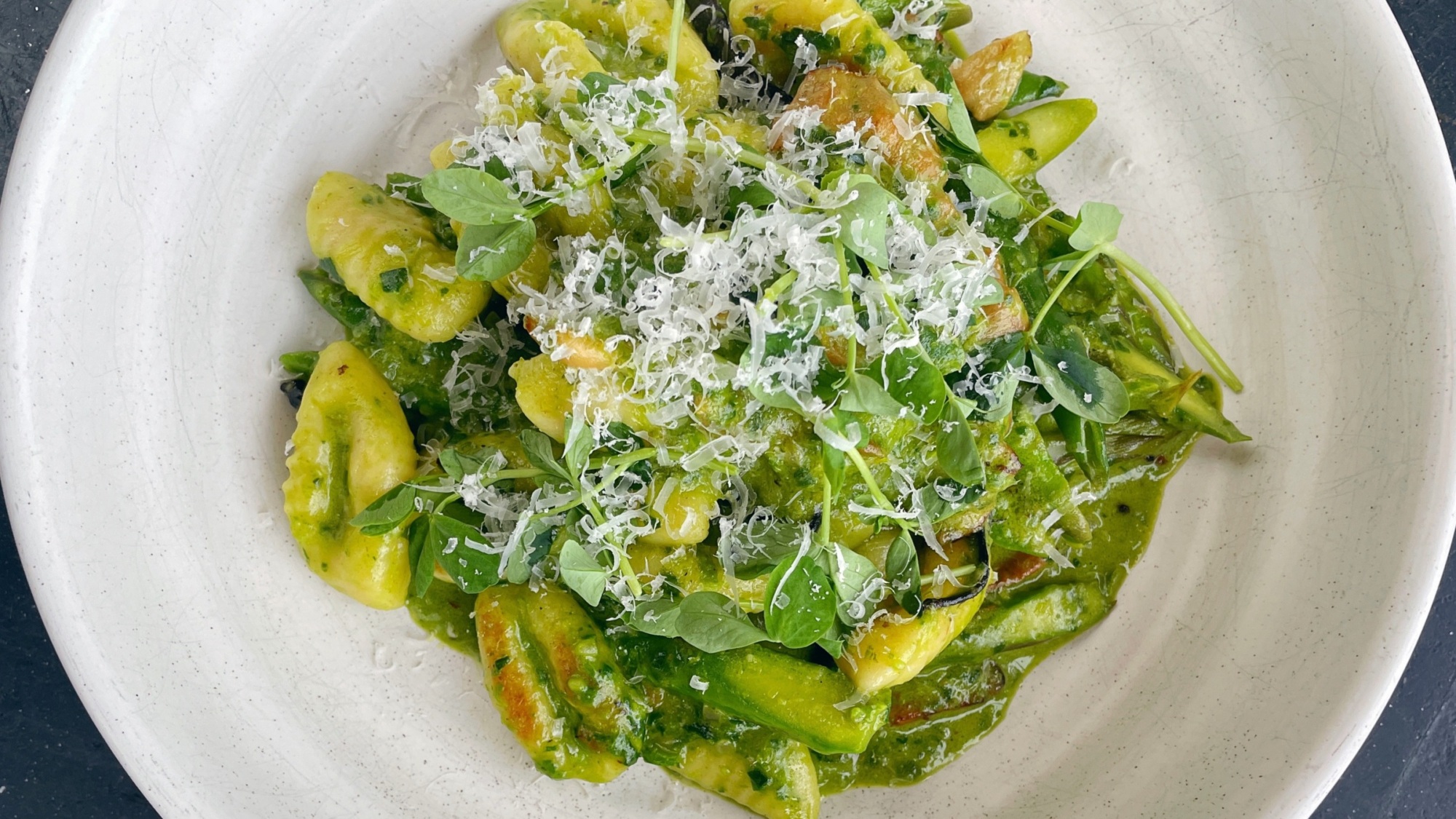
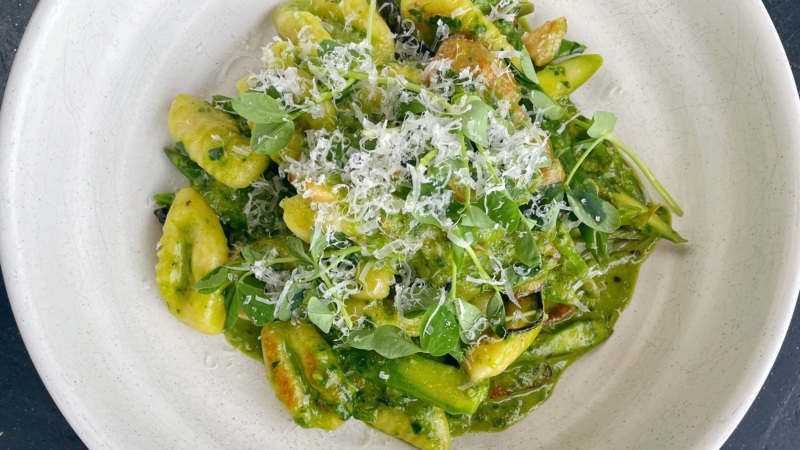
Hotel restaurants have evolved and become more serious about dining in recent years. How do you balance your creative ambitions with the demands of hotel dining?
I’m grateful that it’s evolved so much throughout the years. I remember a decade ago, at the first hotel I ever worked at, it was a totally different experience. Nothing could be changed on the menu without going through layers of approval. It was very much a filet with demiglace and out-of-season asparagus type of place. That experience steered me away from working in hotels for many years, but once I got back in, I realized that not all hotels are like that.
What I loved about Thompson Seattle and at Chicago Athletic Association is that we have creative freedom with our menus and we operate our restaurants as if they are independent entities. Of course our P & L has to come together at the end, but working in a hotel has made me a more well-rounded chef. It’s taught me more from a sales, finance, and human resources perspective. I want to make a menu that’s going to sell while still retaining my identity as a chef.
How many covers are you doing at Cindy’s on a summer weekend evening?
It’s going up every day and it depends on how many private dining rooms we have. In a full day, we can have up to four PDRs and up to two in a dinner service. Recently it’s been around 230 or 240 covers a night and I’m sure we’ll see those numbers go up as the weather gets better.
The terrace bar gets really busy in summer. We have a lot of people who will stand on the patio with a drink and they might not be ordering food. But then we have all of our reservations who are coming in expecting a full sit-down meal. It’s interesting as a chef overseeing all of this and figuring out how to cater to both parties. One thing we’re doing with the new menu is scaling back a little bit on portion sizes. It won’t be skimpy or small, but we will offer half and full sizes for the single, duo, or trio. I don’t want you to get a bowl of pasta and then be so full that you won’t be able to order other things.


Are there any unique challenges when cooking for a rooftop restaurant specifically?
Our kitchen is pretty small. Actually, that’s an understatement. For the volume we do, it’s one of the smallest kitchens I’ve ever worked in. We have to be really organized or it will be absolute chaos. We have to create systems that work in that space with the amount of people we have.
The goal for this menu going into summer was to be smart about it. I want to make sure that the prep we do ahead of time sets us up for success, starting with flavorful sauces and fresh ingredients. I want to limit the touches on each dish to three or four, as opposed to working on a salad with tweezers for three minutes. We can still do great, stunning food, but we have to put the love in it with our prep.
Knowing that Cindy’s is quite popular on social media, do you develop dishes with that in mind?
That’s been ingrained in me since way before I took this position. I’ve always had that visual appeal in mind. I don’t take myself too seriously so my dishes are playful, fun, and colorful. It’s very true to who I am and what I want to eat. I think the fact that I like colors and that happens to photograph well is just icing on the cake.
You won Chopped earlier this year – congrats! And you’ve also been open about your struggles with anxiety, which makes your win all the more impressive. Why did you decide to appear on reality TV? Do you think it’s part of doing business as a chef these days?
I certainly don’t think it hurts. Chopped was the very first TV appearance I’ve ever done. When they first reached out to me, I followed through with the process out of curiosity. As we got closer, we started doing video interviews, and it takes a few rounds before they make their decision. When they chose me, I was like, “Oh s—, now I have to actually do it.” It was honestly the most nerve-wracking thing I’ve ever done in my career. There’s the normal stress of your job in being a chef, but going on reality TV is totally different.
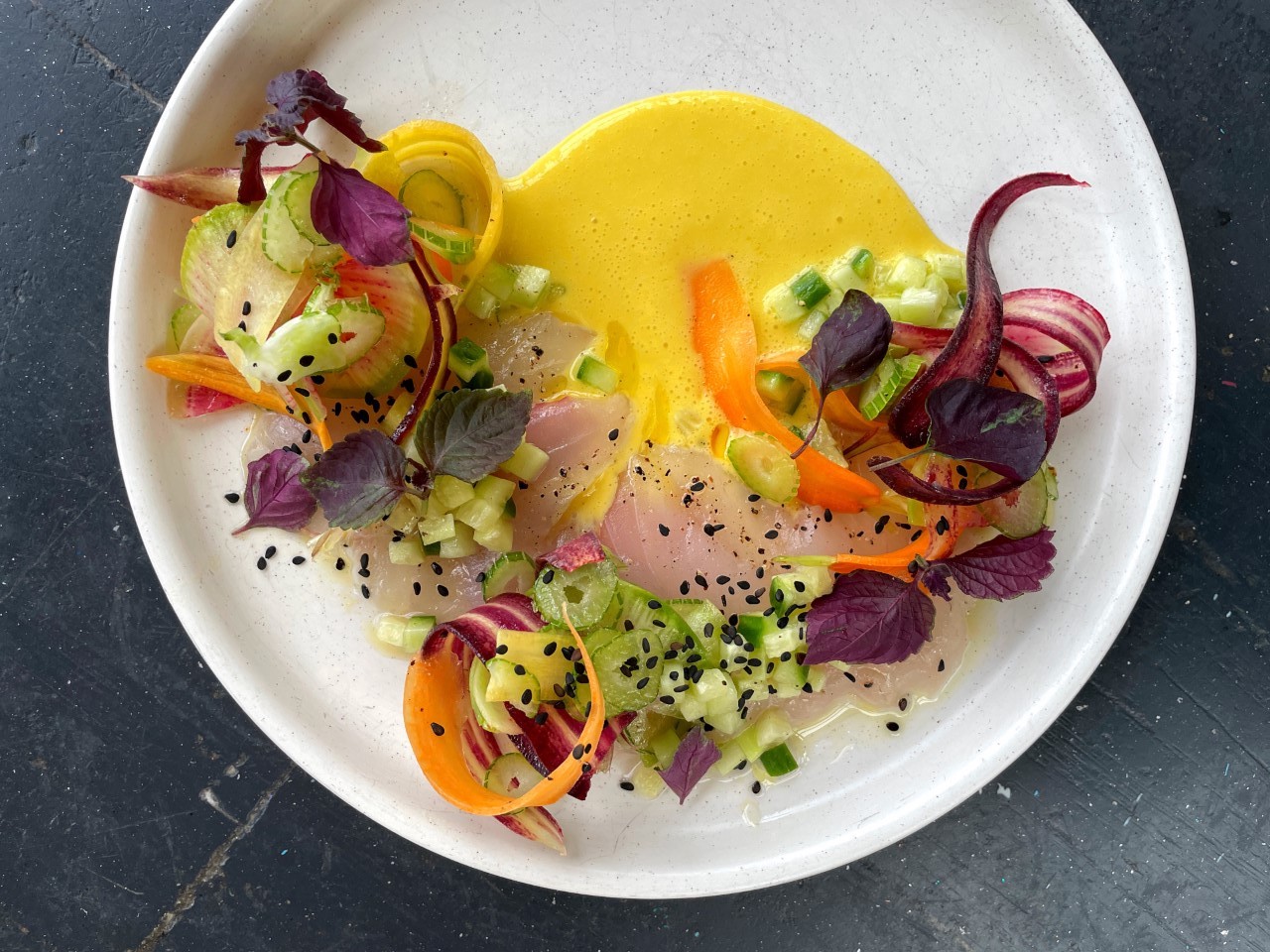

You’re a big advocate for mental health in the kitchen. How would you describe your leadership style and how do you create a healthy working environment for your team?
I’ve evolved a lot in my career. I’ve been cooking for 17 years now and it was very different when I got started. Very male-dominated, and your typical tatted-up kitchen. The mentality was ‘suck it up and work harder, you’re lucky to be here.’ I was a cog in the wheel. And that kind of f—-s with your head as a professional. Once I got my first sous chef job, I hate to say it, but I was guilty of [perpetuating that culture] myself. You’re replicating everything that was done to you, so that kind of toxic behavior carries on.
I think it was 2016 when I started my first management job at a hotel, the Edgewater Hotel in Seattle. I was lucky enough to find a really great mentor that I ended up working with for the next several years. It was there that my brain changed a little bit. I realized that I wasn’t making progress talking to people the way that I was. It was the first position where I realized that I had to manage differently, and the first time I got comfortable managing at a human level — having conversations and not just barking orders.
I’ll be 36 next month. I have a lot of friends at a similar age and we’re all recognizing that the old school way doesn’t work anymore. When I do interviews with new hires, we always talk about culture and work-life balance. I want to get to know them a little bit. A lot of us came up in kitchens that were abusive and toxic. My mentality now is that I’m a human and I want to treat my employees like humans. I understand that we’re not all perfect all the time. My job as a chef is 50% teaching people how to cook and 50% being a mentor. We are managing the next generation of chefs, one that will hopefully lead less toxic kitchens.
Amber Gibson is a Chicago-based journalist specializing in travel, food, and wine. Her work has appeared in Departures, Food & Wine, Saveur, Bon Appétit, and Travel + Leisure. Follow her here; follow Resy too.


